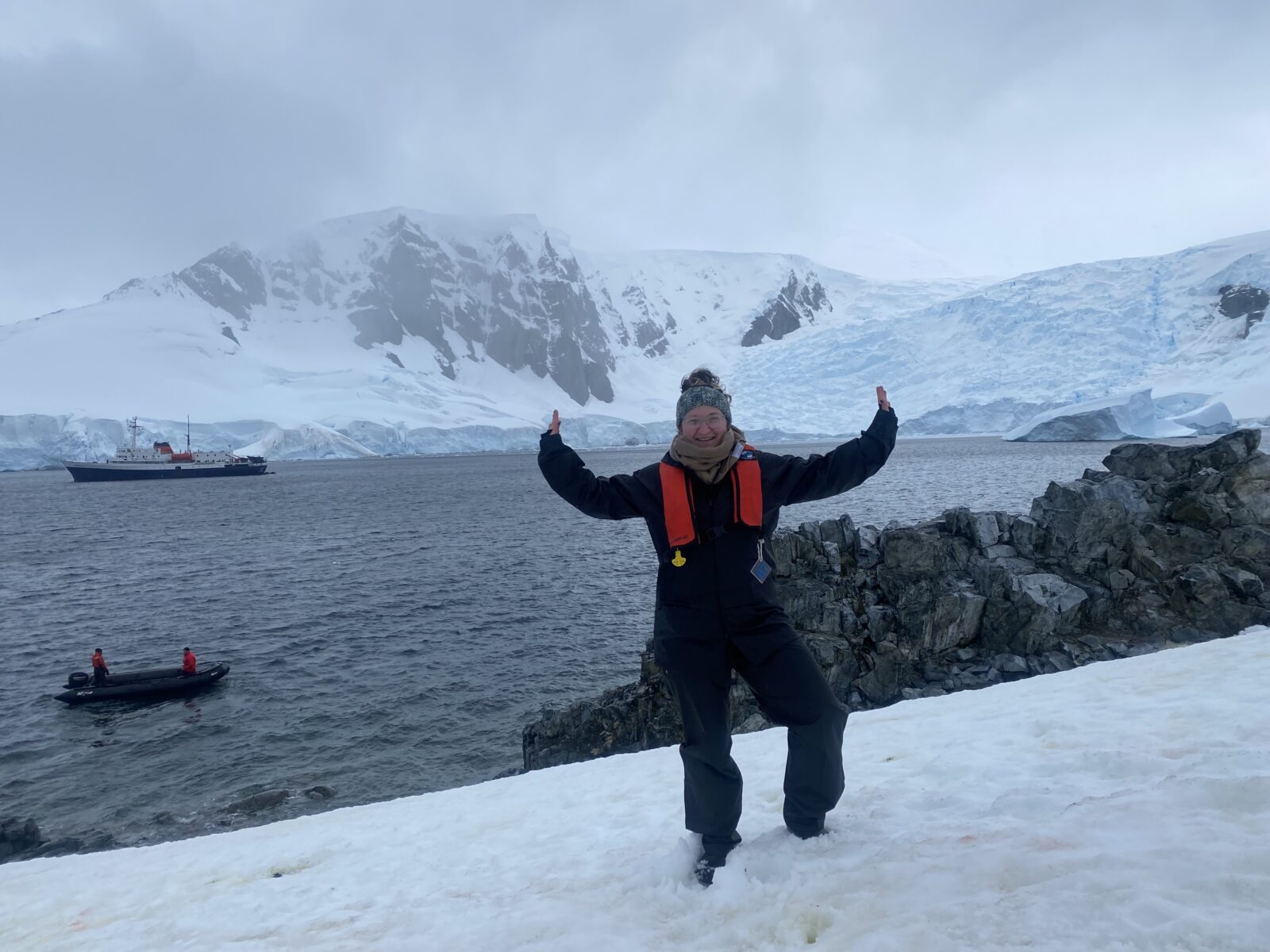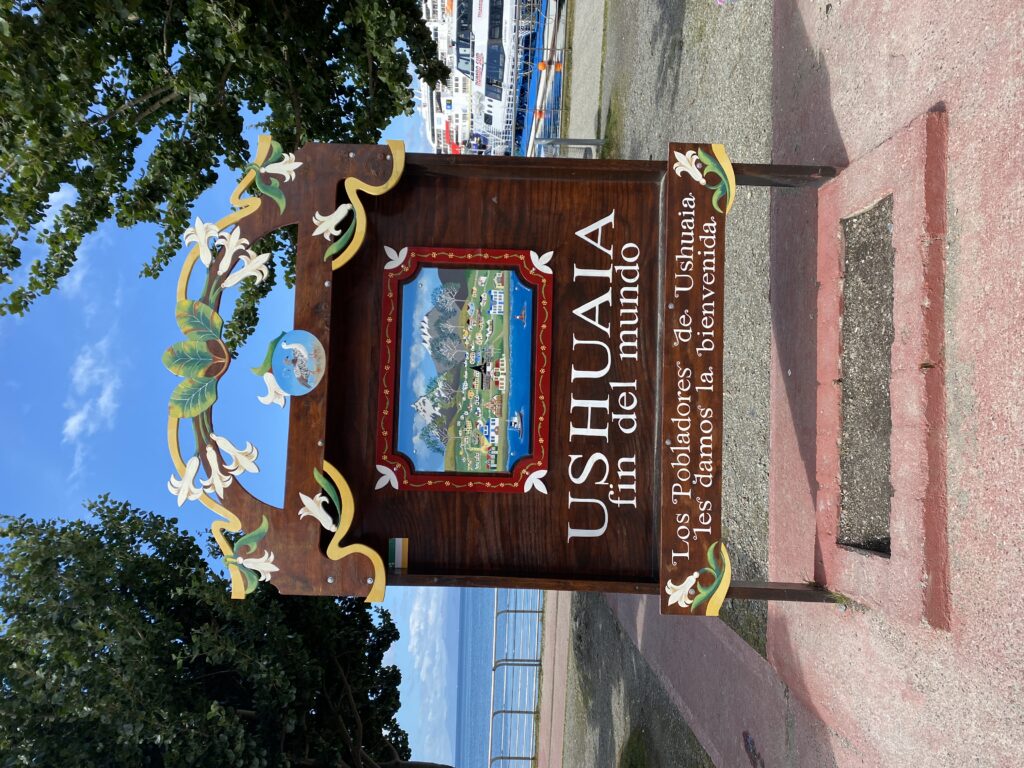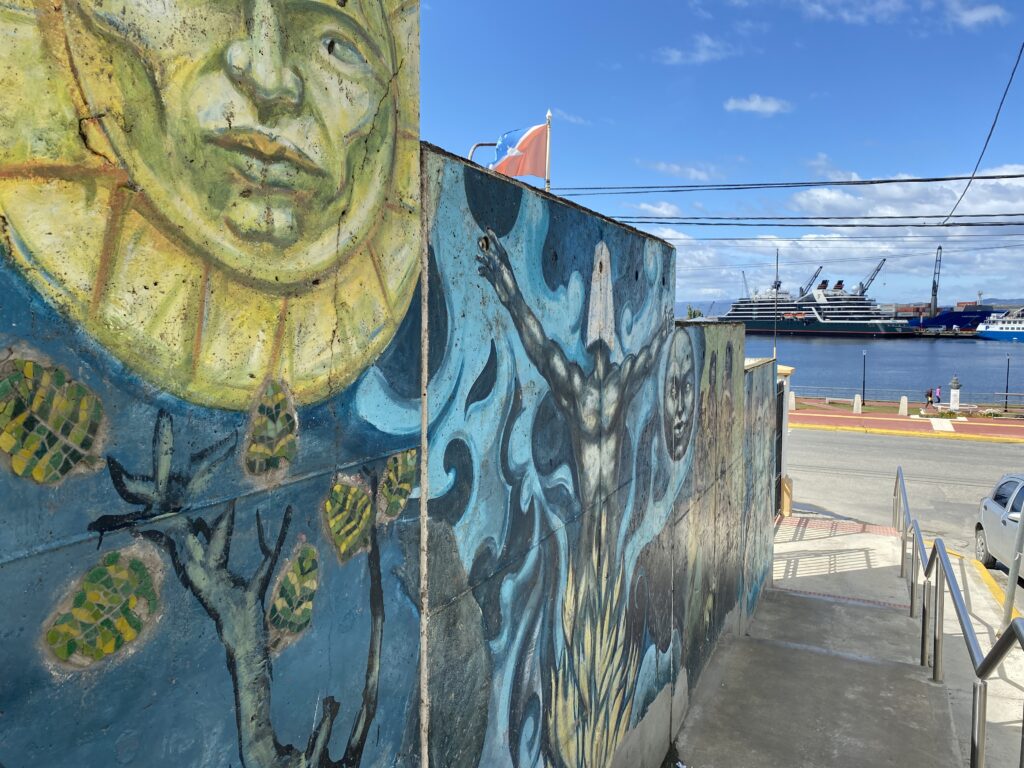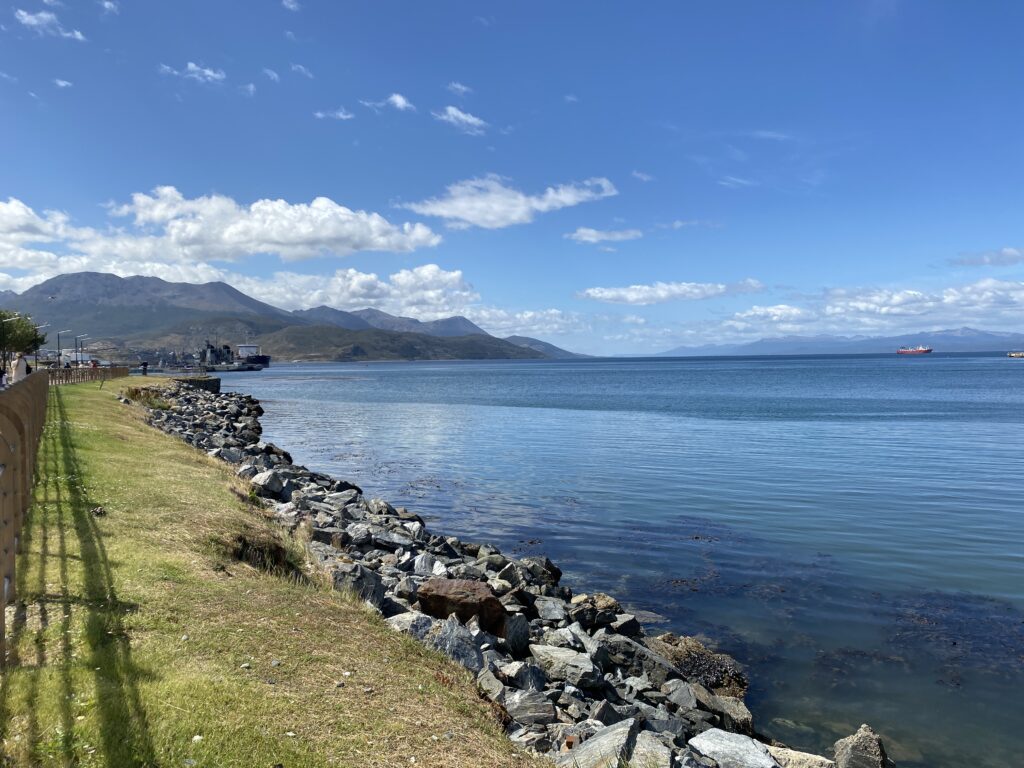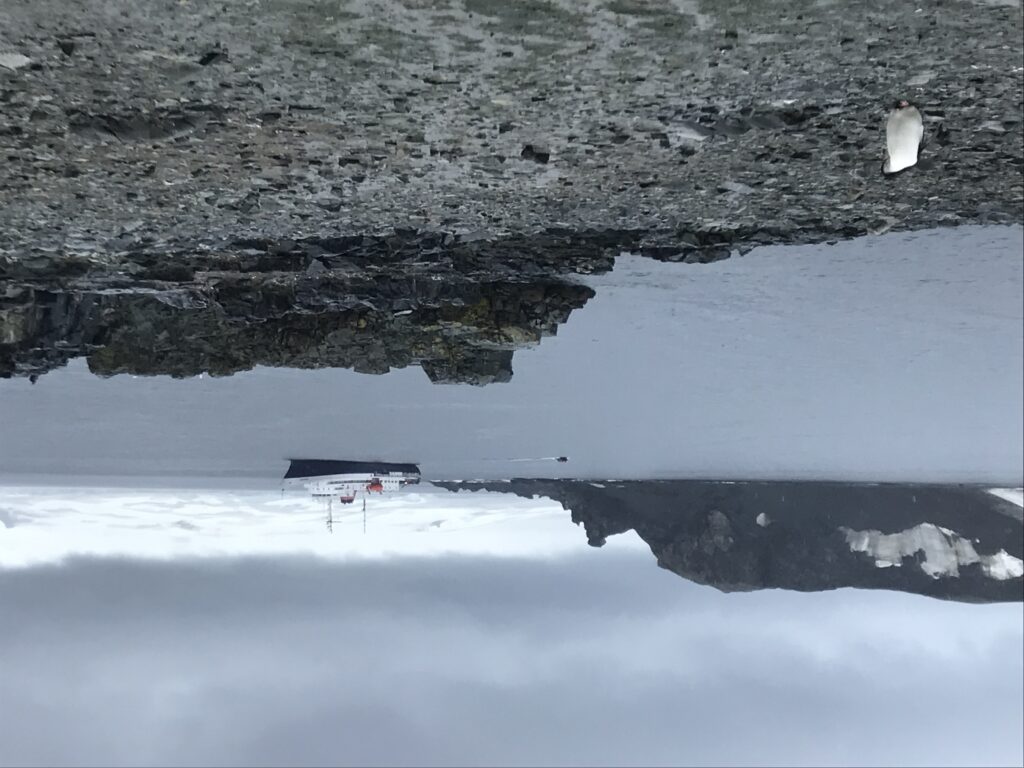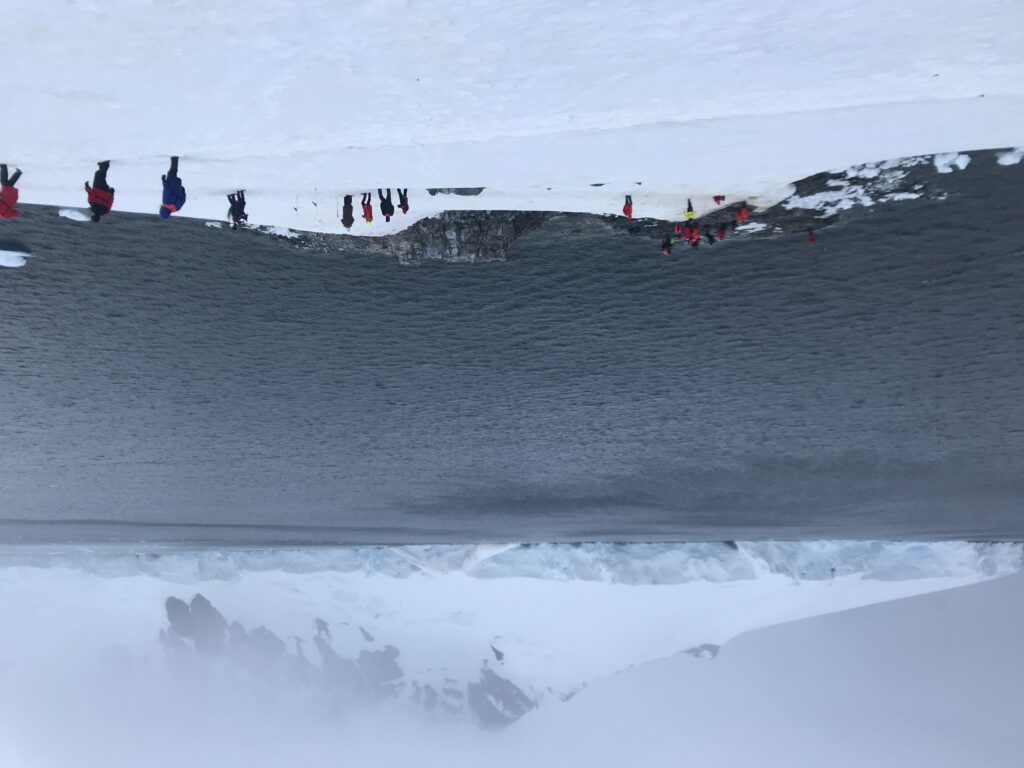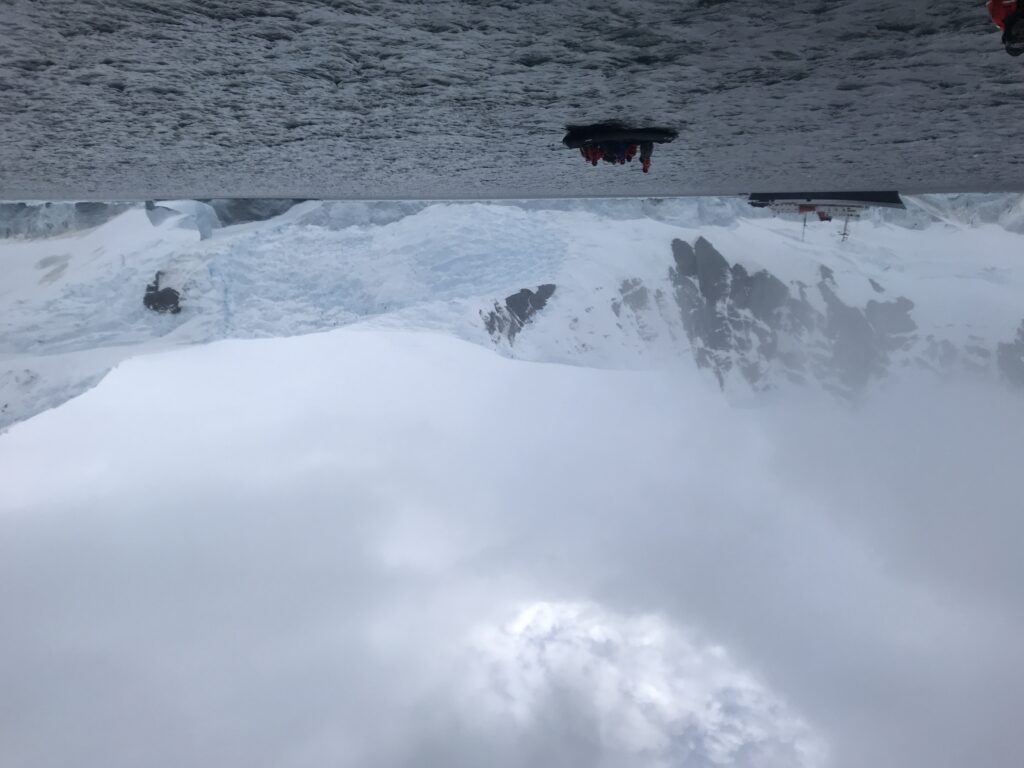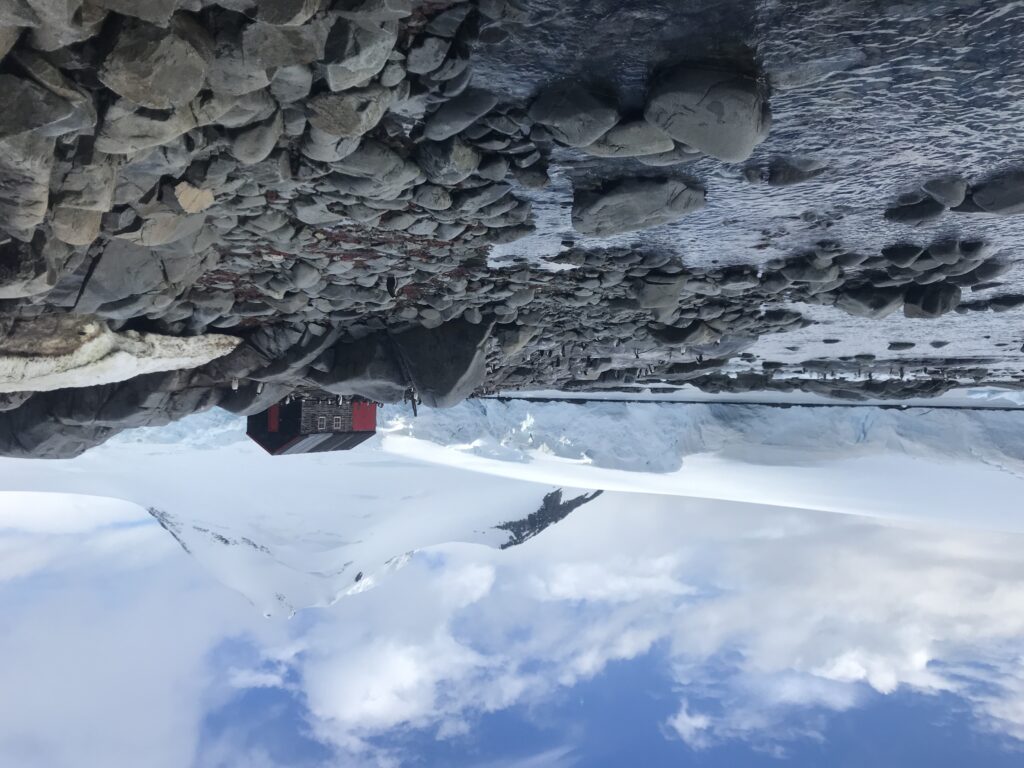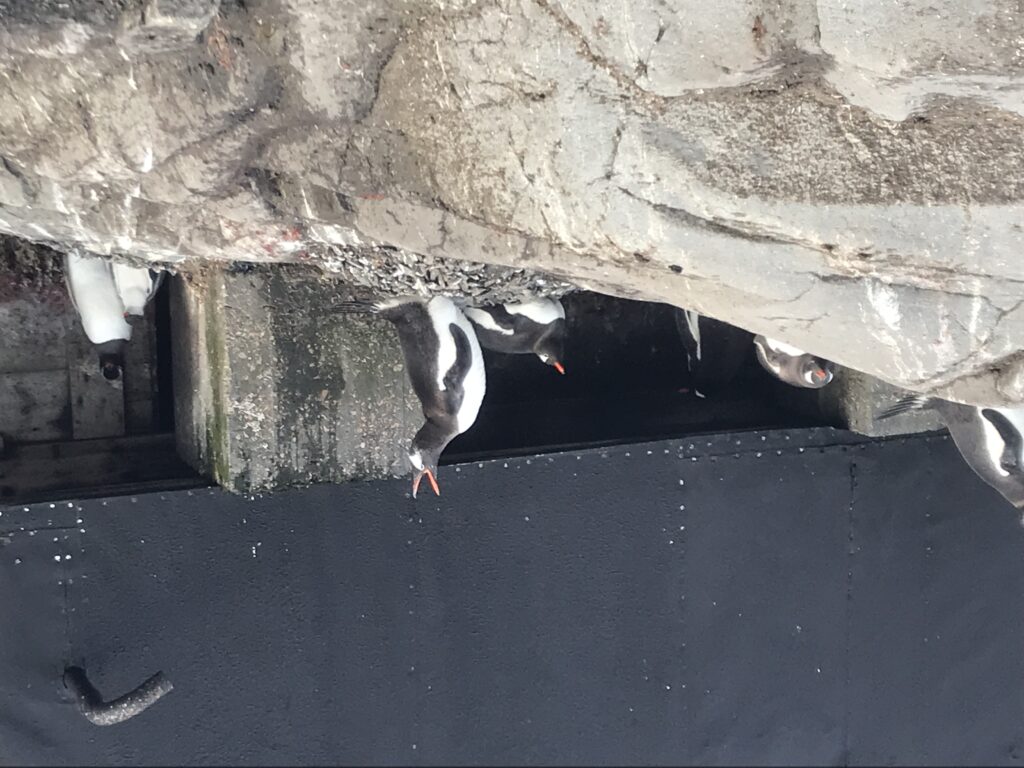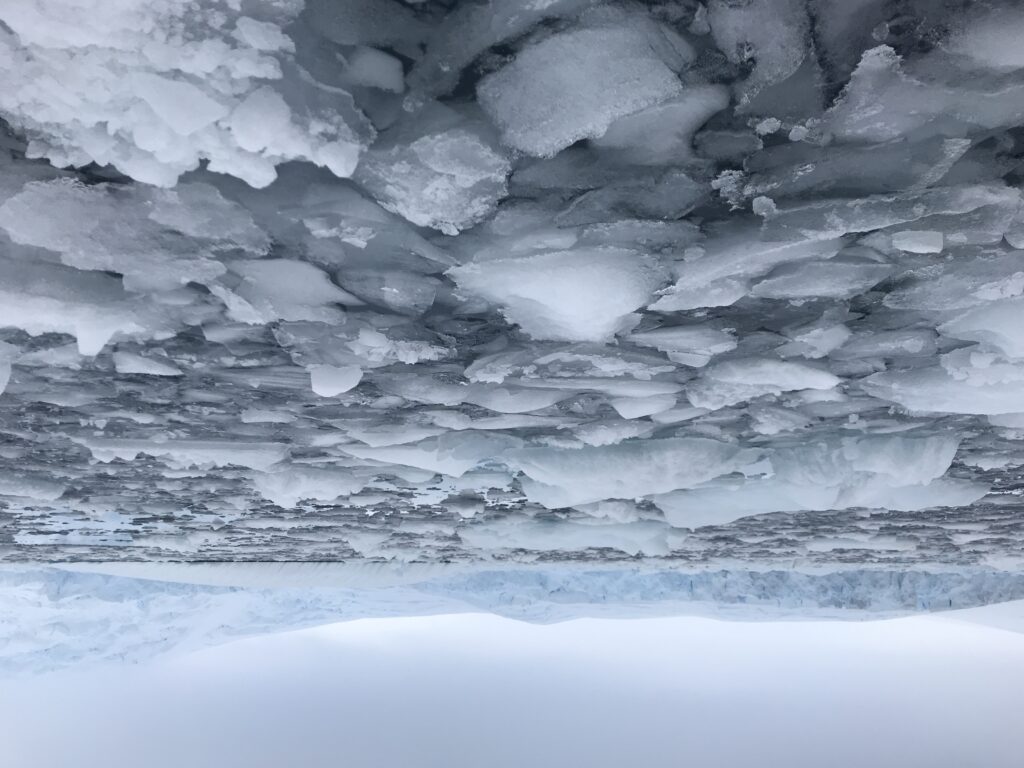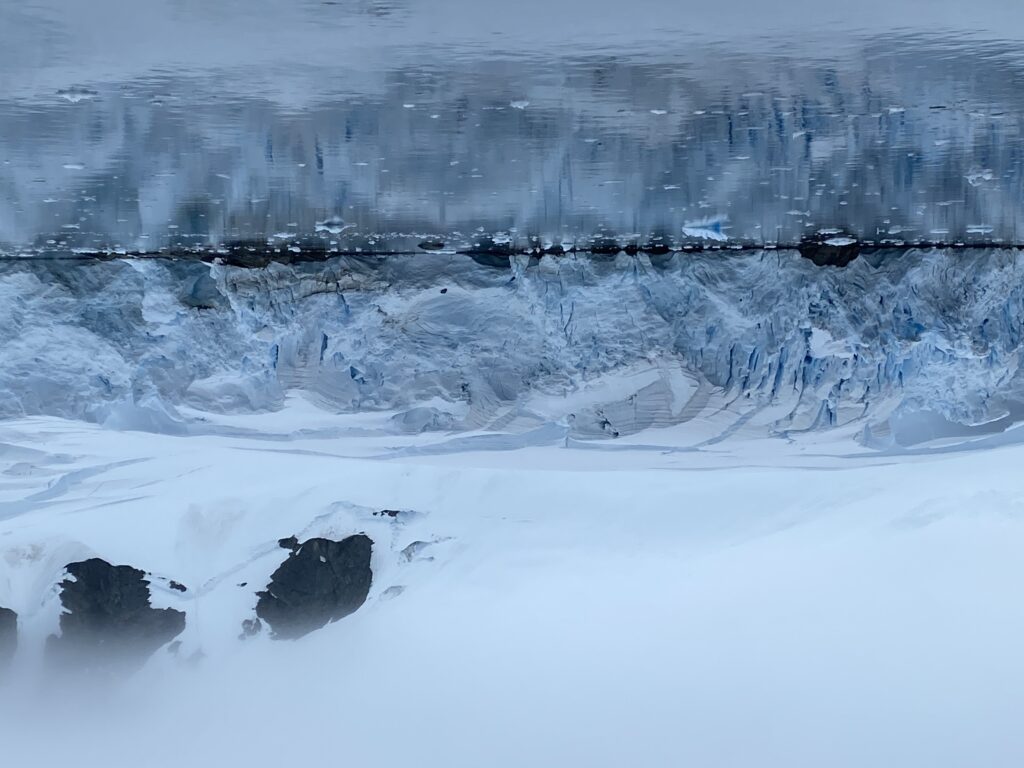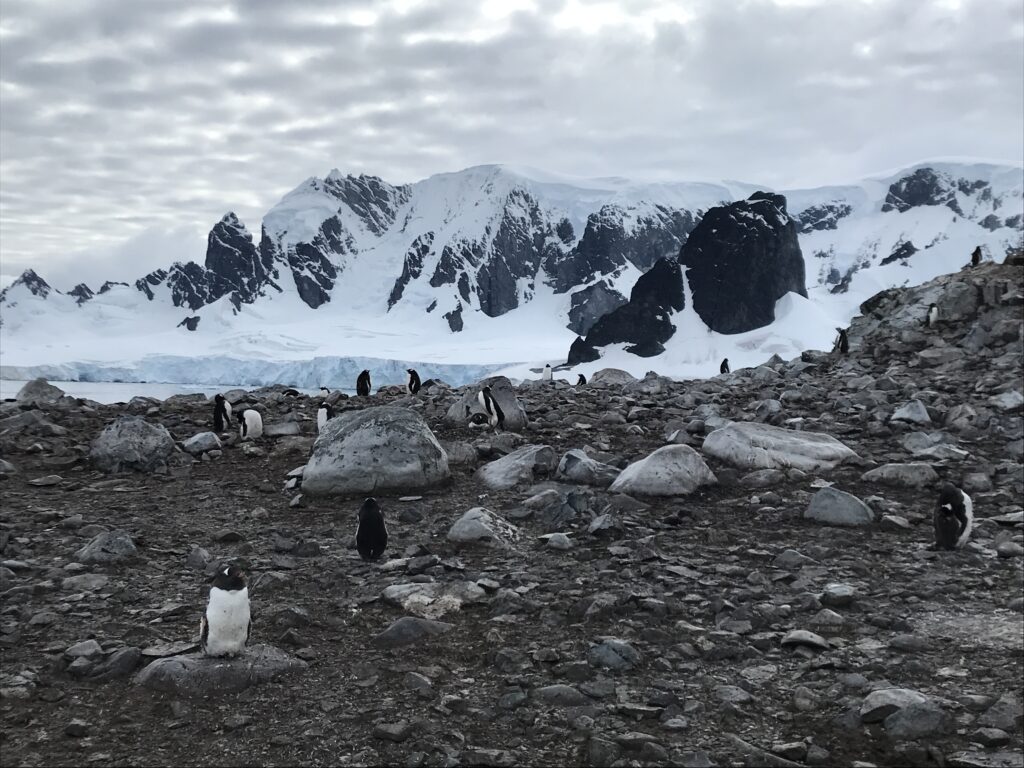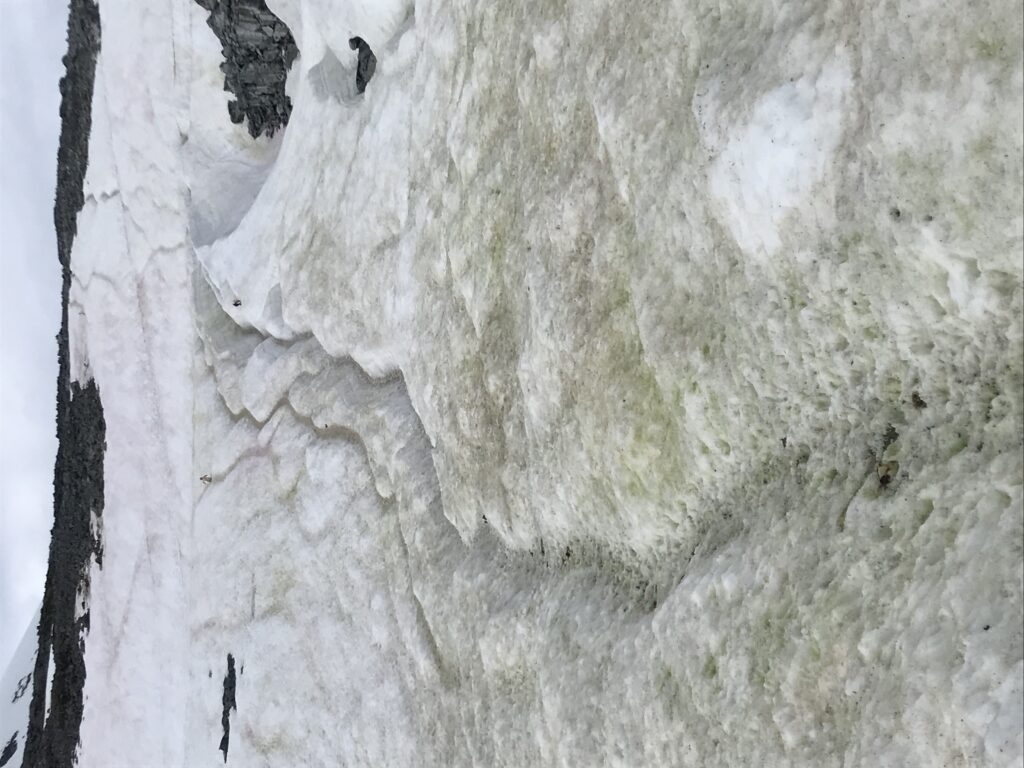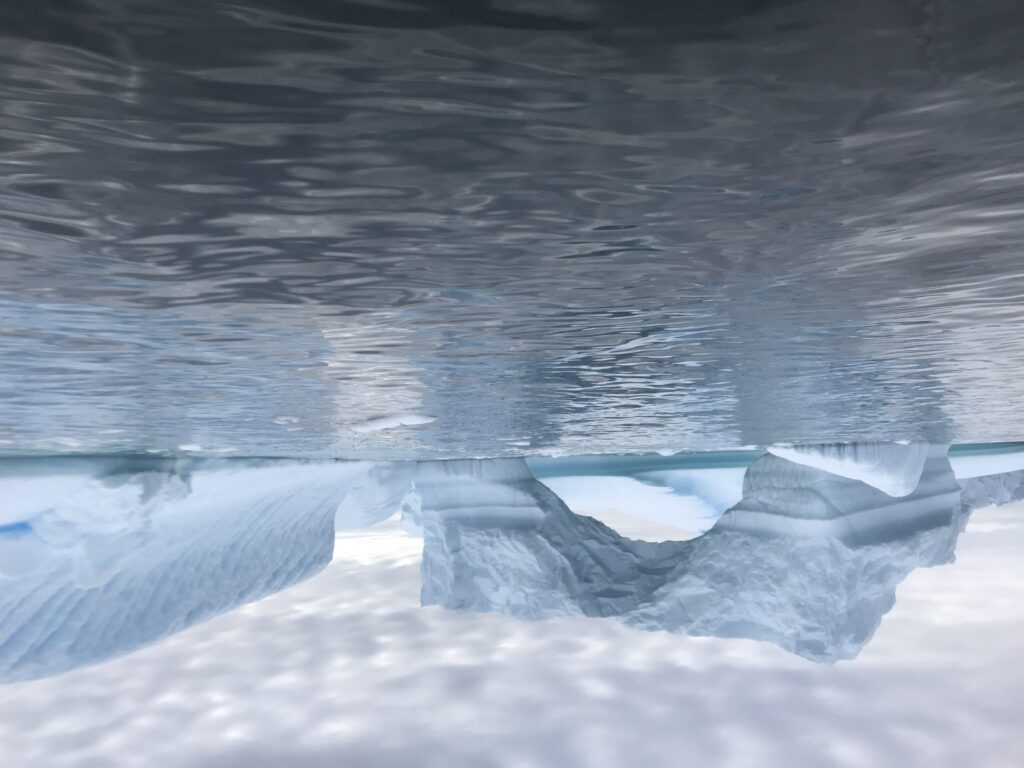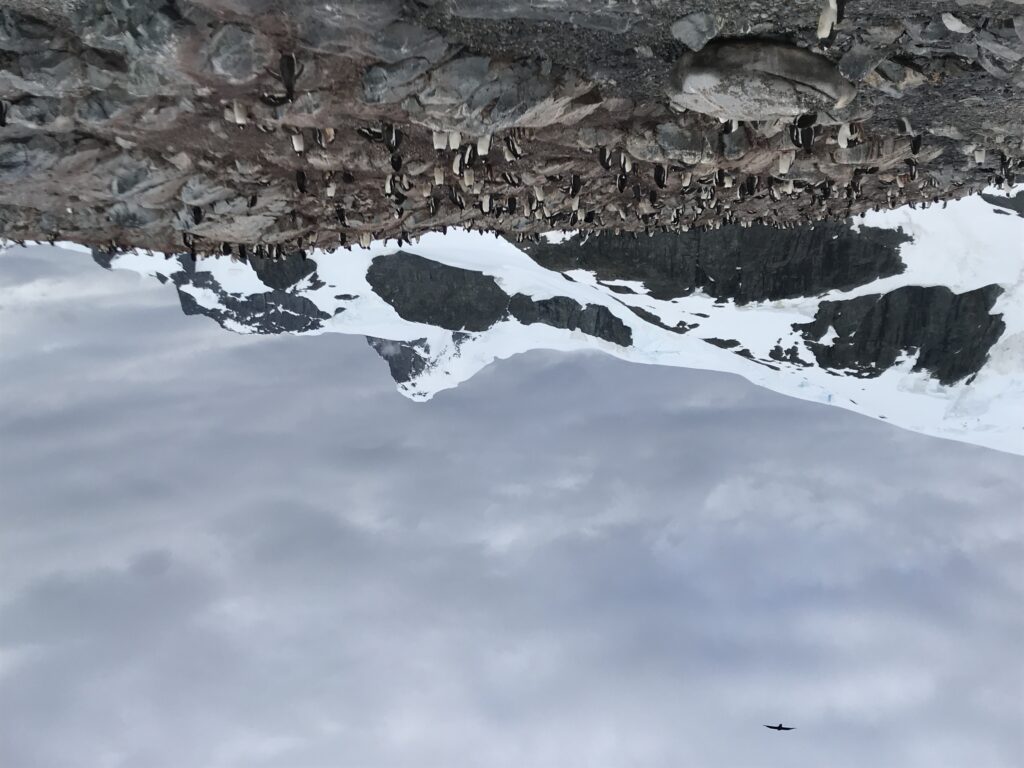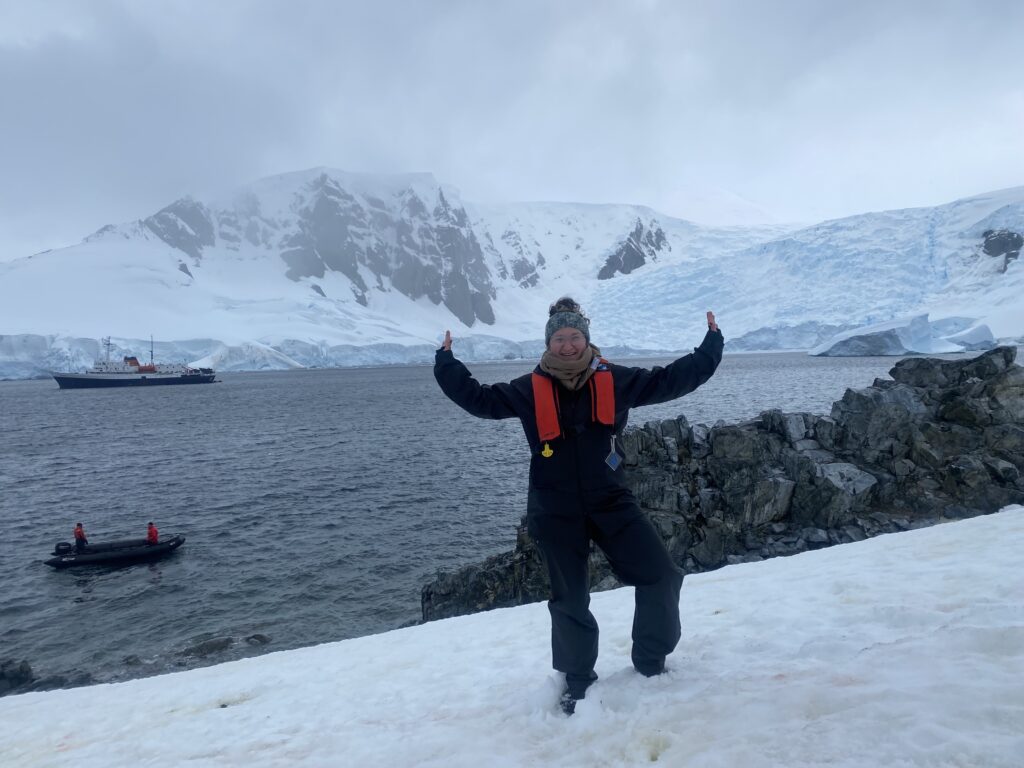
The planning of this trip started in early summer 2019 when I listened to a podcast about traveling to Antarctica and how in 10 years’ time, Antarctica will probably look completely different due to global warming. I went from thinking, ‘maybe I could save that much money’ to ‘I have to save this money NOW’–and that is what I did.
There are many things to take into account when planning a trip to Antarctica, among them boat size, trip length, and level of comfort. I went for basic in all categories: I found a ship, the MV Ushuaia, that had previously been used as a research vessel and only carried 80-90 passengers a at a time on 10-day cruises and provided the bare bones in terms of luxuries. These trips can cost anywhere from $7,000-$30,000, hence my choice to stick to the basics. In addition, I chose a smaller ship for two other reasons—not only can they navigate smaller passages and trickier landings than big ships can, but also only 100 passengers from any boat can disembark at any time, so I didn’t want to have to wait my turn or deal with not being able to go ashore because the maximum number had already been reached.

After doing all my research, in June 2019 I booked my trip for February 2021. We all know what happened then! That’s why this post is titled ‘finally, finally, finally’—up until I was in the airport in Buenos Aires I still couldn’t believe I was actually going to Antarctica. But go, I did, and it was amazing.
As I mentioned, first I flew to Buenos Aires, then down to Ushuaia, also known as ‘el fin del mundo’—the end of the world—due to its location as the southernmost city, at least in South America.
Ushuaia was small and charming, with views of mountains on three sides and water on the other. In February it is summer in South America, so the temperatures were in the 50s (further north in Buenos Aires it had been sweltering, in the 90s) with some days being rainy and others sunny.
I spent two days there before boarding the MV Ushuaia. The 10-day trip was basically divided into crossing the Drake Passage and landing expeditions. Crossing takes around 2-2.5 days each way depending on the weather, and the water can either be more or less peaceful, or super violent; we were advised not to shower during the crossings and to walk as little as possible. If we did have to walk, we had to keep at least one hand free to grab onto railings, etc., because the water made walking in a straight line very difficult. According to the expedition leaders on the ship, our first crossing was a little better than average, and the one on the way back was very smooth, so we got lucky. I still took the recommended motion sickness medication just to be safe, which led to a lot of napping in random places because of the side effects.

During the whole trip, the expedition leaders gave lectures on the different wildlife in Antarctica (mainly penguins, whales, dolphins, and seals), glaciers and ice, the Antarctic treaty between the various countries who all staked a claim there, and how climate change is affecting and will affect Antarctica. (These lectures are where many of my accidental naps, and those of others, took place during the crossings haha.)
On our fourth day on the ship, we arrived to the South Shetland islands, which surround the continent, and made our first landing. Landings took place twice a day, one in the morning and one in the afternoon, and involved riding with 7 other passengers in a Zodiac to land and then stepping in knee—thigh high water in order to actually get onto land. The Zodiac process was actually the part I was most scared about, because it seemed like it might be the wettest part (lol), but all my Zodiac rides were wonderful. Half Moon island featured a colony of Gentoo penguins and fantastic views of the mountains and ice on the continent itself. Another passenger had thought to bring an Antarctica flag, which made for great pictures.
In the afternoon, we went to Deception island, which had little to no snow and no animals, as it was actually the caldera of an active underwater volcano. This is where those who wanted to participate took part in the polar plunge. Don’t even ask, yes of course I did it! And yes, it was freezing. I hadn’t thought to bring a swimsuit, so I did it in a sports bra and leggings.

Day 2 involved landing on the continent, which is what I had been waiting for. Besides research bases various countries maintain on the surrounding islands, there really is not much on the Antarctic continent itself, and this was made plain when we stepped foot on the continent—the short hike we did was literally just a straight vertical path up to a small, rocky outcropping to see the view, and then back down again. The whole excursion lasted less than two hours but boy did it feel good: 2.5 years after booking the trip and having it postponed and postponed had led me to feeling like it was never going to happen. And yet there I was, finally doing it. Country number 50, and continent number 6. (Oceania, I’m looking at you.)
The afternoon expedition was to Port Lockroy, the southernmost post office in the world, officially maintained by the British (because of course). A colony of penguins lives on the island, and the post office also boasts a little museum featuring how scientists lived there in the 1960s, as well as a seriously overpriced gift shop. Picturesque, if nothing else.
On the third day, we went to Peterman island in the morning and went for a Zodiac cruise in Girard bay in the afternoon. Peterman is home to a penguin colony, and we did a short walk to see the colony and then another short walk to see the view out onto the water. The island also features an abandoned building once used as a research base and now left for the penguins to make use of as they see fit.
The afternoon Zodiac cruise turned out to be one of my favorite parts of the trip. We were docked in Girard bay, better known as Glacier bay, because it was filled with floating ice, glaciers, and ice shelves. It was breathtakingly beautiful. We were able to get extremely close to some glaciers, and even reached into the water to take some of the ice back to the ship to use for drinks later on in the evening.
Our last day of excursions, we started at Cuverville island, home to the largest known penguin colony in the world—350,000 pairs of penguins. The stench wafting off the island was apparent from far off the shore, but one can become accustomed to anything, and rather fast, too. It was on this island that we were able to see the “penguin highways” up close. These are the trails that penguins make to be able to navigate the ice and snow that much easier. Kind of like in university when we walked across the grass because it was faster or more convenient than a sidewalk.
Our last excursion was supposed to be another Zodiac cruise in Patagonia bay to see whales, but we ended up not being able to leave the ship because the whales had some to us—50 humpbacks were in the bay surrounding the ship! Taking photos and videos of whales is very challenging, because unless they breech (which is also hard to catch on film) by the time you snap the photo all you get is either part of the head or the tail as they disappear back into the water. It was also heavily snowing that afternoon, which made it all feel just magical.

Before we knew it, we were already sailing back through the Drake Passage, taking meds and resting once again. This time, the mood on board was more festive, and I even found a small group to play pinochle with. We disembarked at 8 a.m. on the tenth day, and I spent the day in Ushuaia shopping for souvenirs before heading home once again. I don’t normally rank my trips or even choose favorite destinations, but this has to be the best trip I have ever gone on, and I highly recommend it, especially before the consequences of climate change begin to have their effects. After these last few months of really big trips (South Africa, India, Antarctica), I am looking forward to some rest, solitude, and self-indulgence on a smaller, at-home scale. Saving some money also wouldn’t hurt! 😉
